It was always nice to walk alongside water first thing in the morning as the sun was rising with the mist not as yet fully cleared. Some of the lakes were in fact reservoirs and the other major positive was that they also attracted various birdlife (which in some cases was protected).

In between the wooded areas the rural scenery continued to be dominated by the presence of numerous maize fields. Plus some of the fields still had crops in them. So of course it was watch out for the large farm vehicles as well as the combine harvesters!

The days were usually very warm by mid morning and I can remember descending into the small village pictured below via the aptly named Voie du Puy en Velay, knowing that this was where I could find potable water! You can see how bright the sun is by the hazy appearance of the photograph below. Glimpses of the Pyrenees were now becoming commonplace from the various hill top vantage points.
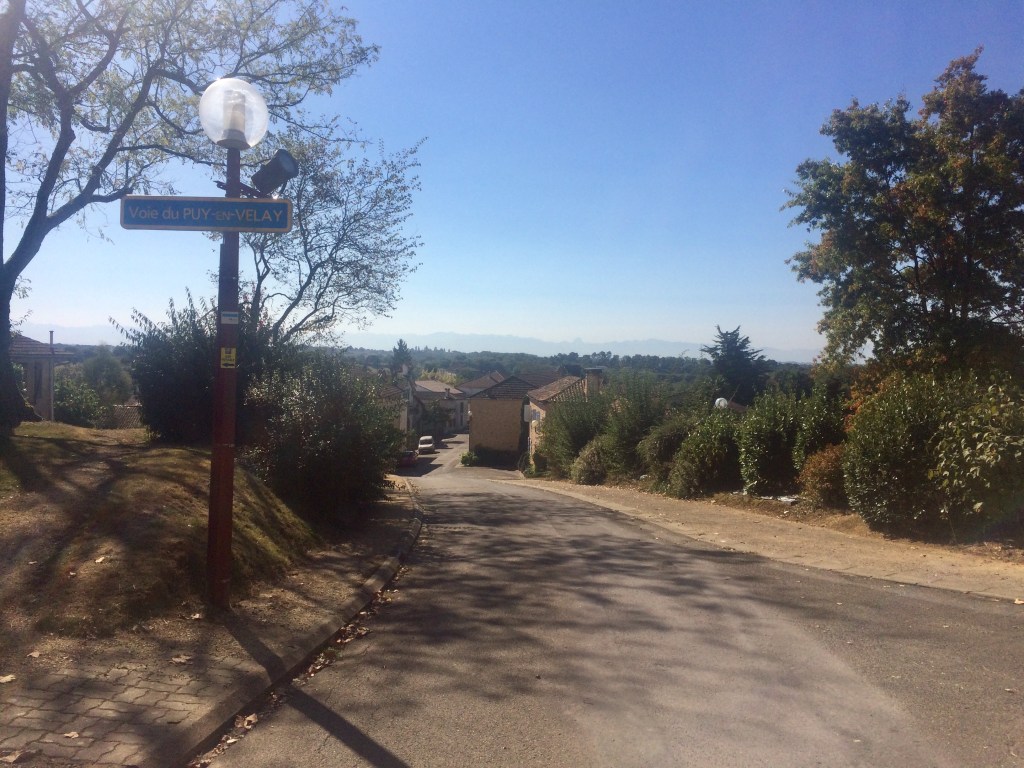
There continued to be a range of architecture that I passed with a range of various old buildings located in the villages as well as in the surrounding countryside. This old mill (pictured below), has been preserved and is now used by an organisation for other functions. You can clearly see the water channel which directed water under the mill.
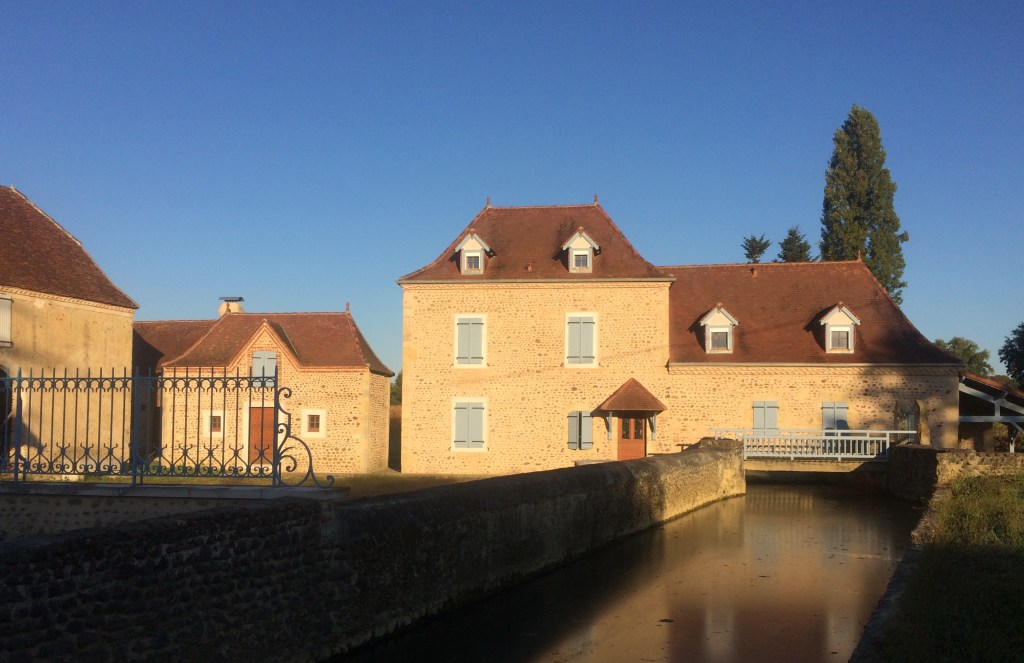
Along the way as I walked through or near various farms as well as along the hilltops there was more in the way of a number of magnificent views of the Pyrenees to be had. There were not as many farm animals to be seen as earlier on in my journey (particularly during the first week of the Via Podiensis).

It was really hot at times and on my toughest day it was 42C (yes this reading is correct) for a period, which was measured whilst walking along a bitumen road in a valley with there also being no breeze. Hence why I was stopping at every church where there was potable water (and at times making up another litre of Hydralyte). I had learnt to measure the ambient air temperature to help gauge how much fluids I should be taking in.
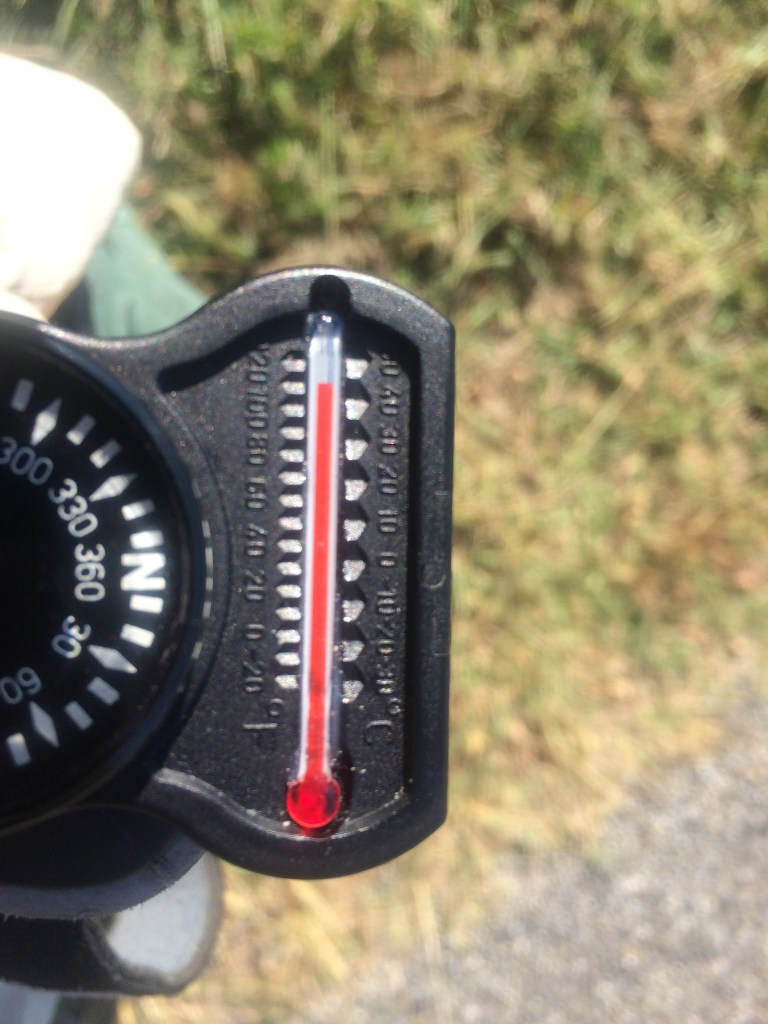
This unusual looking small church (pictured below) afforded me yet another hydration stop and again I was not alone! On the toughest days during a stop at a church I would fill up one water bottle and tip most of its contents over the upper half of my body to help cool down. I had seen some of the French hikers do this earlier on in my journey and yes, I can state categorically that it helps. It was also an opportunity to compare notes with any other hikers who were also taking a break.

Again every hill afforded a view of the Pyrenees and sometimes something else. I had to be careful taking the photo below of an historic church because I was standing by a road and yes I had to watch out for those cars! This was just prior to the last push for the day up the final hill into Arthez de Bearn.
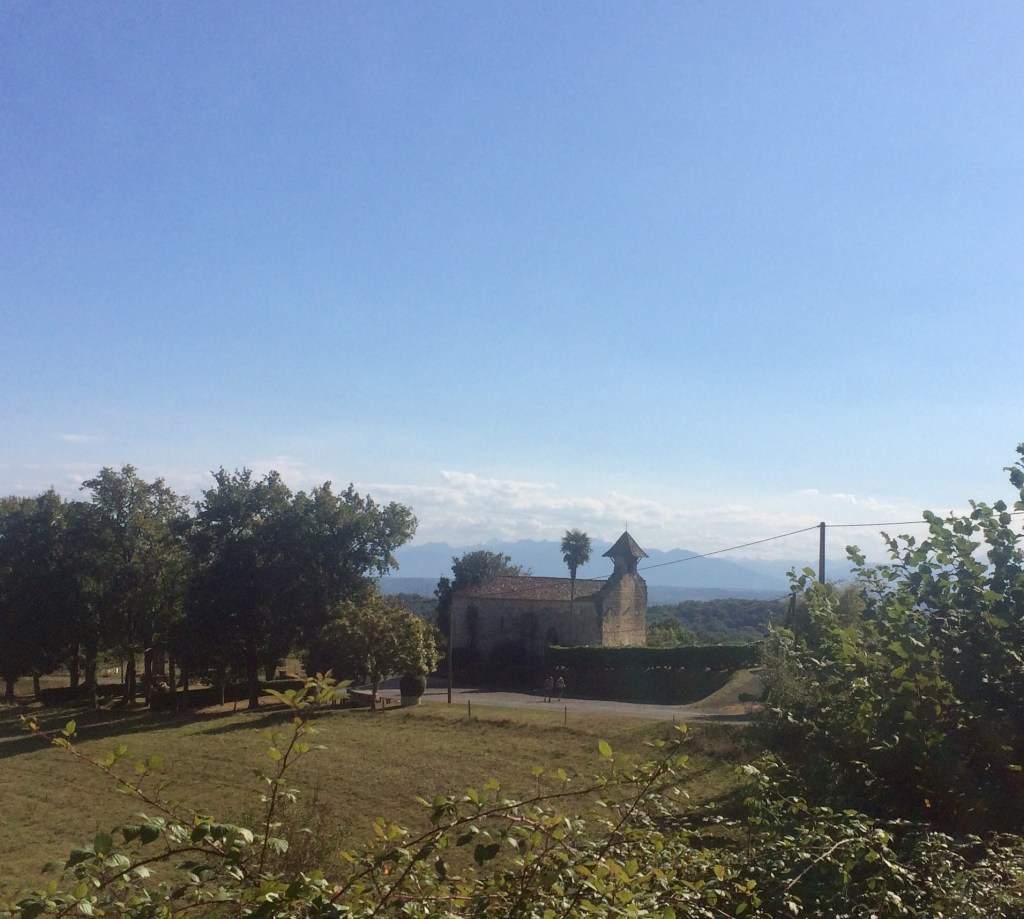
However once up in the town I was rewarded by being able to purchase some more bread at a local boulangerie for lunch over the next 2-3 days. Some of the more memorable food I remember from this stage included fish terrine and veal stew as well as Tarte de cerisses.
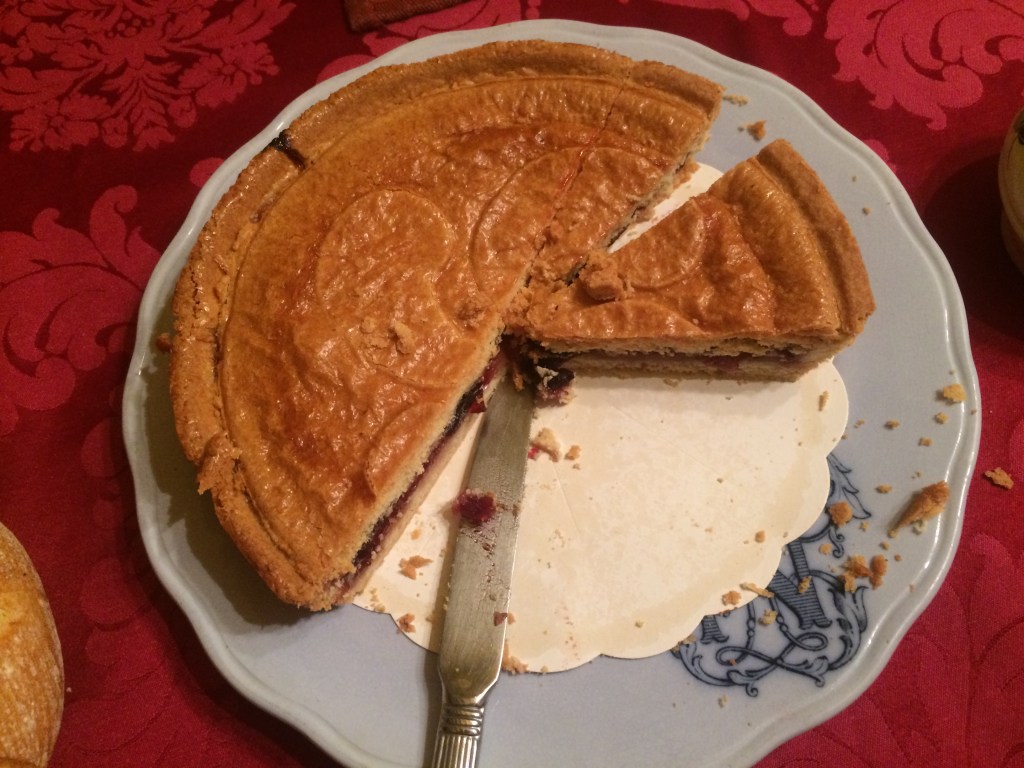
To be continued- TalesFrom the Via Podiensis- k) The Pyrenees Foothills